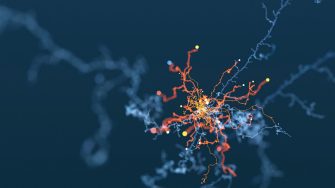
Theoretical approaches to living systems
Project ID: 165
Supervisor(s): Richard Morris
The Morris Lab is interested in animate, living matter. We want to understand it the same way that a physicist understands inanimate matter. To do this, we need to develop an effective physics of living systems. Our approach is to combine advanced concepts from non-equilibrium statistical mechanics, active soft matter, and applied mathematics.
We are part of the EMBL Australia program and work across the School of Physics and the School of Biomedical Sciences (Single Molecule Science) at the University of New South Wales (UNSW), Sydney. The lab is affiliated with the Australian Centre of Excellence for the Mathematical Analysis of Cellular Systems (MACSYS), and coordinates the national Theory of Living Systems webinar series, which showcases leading research at the interface of physics and biology.
Interested honours students or prospective PhD students are encouraged to get in contact; I typically aim to tailor a project to suit the tastes of an applicant as well as dovetail with the current research activities of the group. If desired, projects can be constructed to combine analysis with either simulation or data & image processing. I expect successful honours students to be offered the opportunity to study for a PhD.
